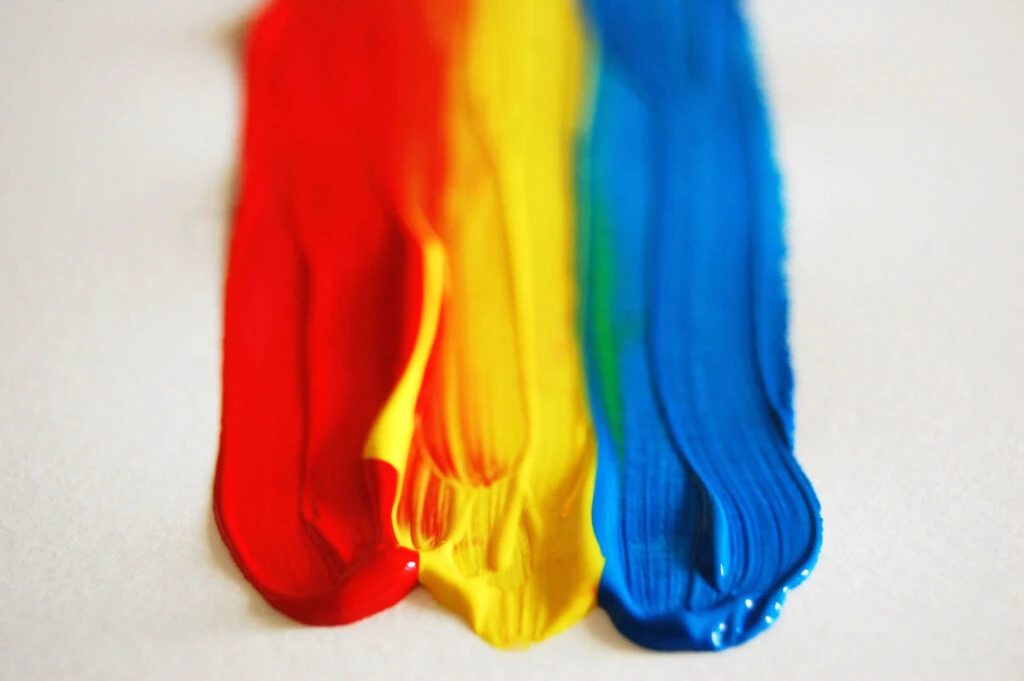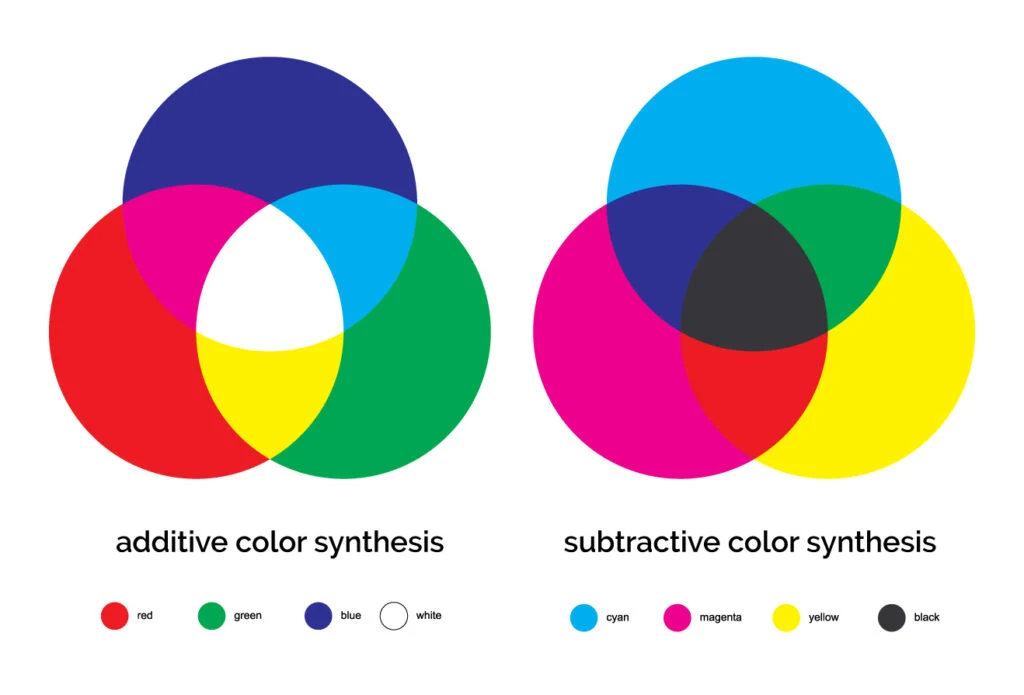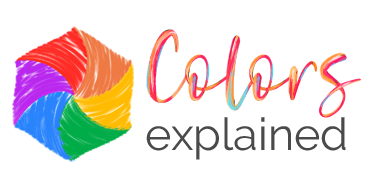Here’s everything you need to know about primary colors.
The world of color is vast, but it all ultimately starts with primary colors.
Most people know primary colors as the foundation of color, but they’re actually much more complicated and exciting than that.
To help you understand primary colors better, we’ll answer the question, “what is a primary color,” explain the primary colors in each color model, debunk a few common misconceptions about primary colors, and explain why all this matters.
You’ll walk away from this post with a stronger understanding of what primary colors are, why they matter, how you can use them in art and design, and how not to use them.

Color Theory
The primary colors are the building blocks of color theory. In order to understand anything about color, whether it’s a simple or a complex concept, you first need to have a firm grasp of the primary colors.
Everything we’ll talk about, from color schemes to tertiary colors, is contingent on primary colors. We can’t overstate their importance.
Primary Colors
The three primary colors are the original parents of all other colors. You can find the primary colors on the color wheel on each end of it, equally distanced from one another.
However, the primary colors are more complicated than most people usually assume. You probably learned in school that the primary colors are red, yellow, and blue.
While that’s true, that only applies to the RYB model, which applies when mixing paint.
We also have the RGB and CMYK models to consider, which are concerned with mixing light and ink, respectively.
Primary Color Examples
Here’s a list of primary colors for each color model:
What Are the Primary Colors of Paint (in the RYB Model)?
- Red
- Yellow
- Blue
The RYB model is mostly used in the painting industry and remains the traditional color theory.

What Are the Primary Colors of Light (in the RGB Model)?
- Red
- Green
- Blue
The primary colors in the RGB model are based on the three types of color receptors in the retina called cone cells, each of which has broadband sensitivity but maximum sensitivity at different wavelengths.
A consequence of this is that color reproduction is trichromatic – the use of three primaries allows a wide range of colors to be reproduced.
Because of that, the RGB model is the most used in modern color science.

What Are the Primary Colors of Pigment (in the CMYK Model)?
- Cyan
- Magenta
- Yellow
Note that the CMYK model is mostly used in the printing industry.

By understanding the primary colors in each of these situations, you’ll be able to shift seamlessly from traditional painting into digital art, design, or any other area of the art and design world dealing with color.
Luckily, it’s easy to remember each color model’s primary colors since the names of primary colors are abbreviated in the model’s name.
Additive and Subtractive Colors
Part of the reason why there are different sets of primary colors is that some are additive, some are subtractive.
There’s an additive color theory for “material colors” like paint and pigment. But there’s also subtractive color theory, which deals with colored light, like the kind that shows up on your computer monitor.
Additive Color
Your TV, smartphone, or computer screen emits light, meaning they operate under an additive color model. When colors are mixed together, this produces more light.
That’s why if you combine all the colors together, you’ll get white. The RGB color model is an additive color system, so it has additive primary colors.
Subtractive Color
When mixing paints or ink, like for art or when you’re using a printer, the pigments in the paint or ink reflect light to show a specific color.
Think of applying paint to a piece of paper. You start with white, where all the wavelengths of light are being reflected.
As you add colors of paint, that paint subtracts light of specific wavelengths from being displayed. This creates different colors. The RYB and CMYK color models are subtractive color systems, so they have subtractive primaries.

Not That Pure
In school, you probably learned that primary colors are “pure” – they can’t be made by mixing other colors. Many design professionals continue to say this. But it’s actually a common misconception.
You can create red by mixing yellow and magenta. Green is simply cyan and yellow blended together. And you can produce blue by mixing magenta and cyan.
In that sense, there are no “real” primary colors. But there are conceptual primary colors that we can rely on to inform our understanding of the world of color.
So even though some of what we’ve learned about primary colors isn’t true in the real world, they’re still essential building blocks of color theory and design.
Blue and Yellow Don’t Make Green…
…in painting, at least!
In school, you probably also learned that you could make all other colors of the visible spectrum by mixing primary colors in the right combination if you start with primary colors. It turns out this isn’t exactly true either.
Chances are, if you try this approach with a paint set, you’ll end up with a muddy mess instead of a beautiful rainbow. That’s because there are no “pure” paints on the market today.
By mixing two primaries, instead of getting the color you want based on the color wheel, there’s a good chance you’ll instead create a brownish olive color – something muddy, if not unusable, and certainly not what you were hoping for.
That isn’t because of some flaw in color theory. It’s just because most colors you see, even if they look like primary colors, are made up of more than one pigment.

In fact, pure primary colors are rarely seen in real life. All yellows have either a green or red undertone to them.
Every red you see in real life either has a bluish or yellowish cast. And all blues either have a yellow or red undertone.
This comes into play whenever you mix paints together. If you’re trying to make green, mix blue and yellow, you might accidentally use a reddish yellow. Well, mix red with yellow, and you have orange, blue’s complementary color.
This will result in a muddy greenish color instead of the true, clean green you want because it’s essentially like you’ve mixed in a little bit of red into your mixture. To get a nice, clear green, you have to mix blue with a greenish-yellow.
The same goes for the other colors. When mixing paints with a specific end goal in mind, always factor in the paints’ undertones to avoid accidentally creating a muddy mess.
That’s because if you accidentally mix two complementary colors together, you’ll make black or brown. So if a complementary color creeps into your color mix, that will change the color you’re left with in the end.
How Many Primary Colors Are There?
Regardless of the color model, three colors are considered primary in all of them. The primary and secondary colors change for each model, but for the RGB, they are red light, green light, blue light, while for the RYB, they are red, yellow, blue.
Is Red a Primary Color?
In RYB and RGB, yes, red is a primary color. However, red is a secondary color made by mixing magenta and yellow in the CMYK color model.
Is Yellow a Primary Color?
In RYB and CMYK, yes, yellow is a primary color. However, yellow light is a secondary color made by mixing red light and green light in the RGB color model. If you mix all colors of the RGB model, you’ll end up with white light.
Is Green a Primary Color?
In RGB, yes, green is a primary color. However, green is a secondary color made by mixing cyan and yellow in the CMYK color model or yellow and blue and RYB color model.
Is Blue a Primary Color?
In RYB and RGB, yes, blue is a primary color. However, blue is a secondary color made by mixing cyan and magenta in the CMYK color model.
Did you enjoy reading about the primary colors? Then share it with a friend who might find this article interesting too!

Valora
Saturday 9th of September 2023
Hi. Overall, it is a good article, but the RYB color model is old and outdated. In painting trying to use those colors does not work. As you stated, the red used in the RYB color model is a secondary color made by mixing magenta and yellow. Cyan, Magenta, and Yellow are the actual primary colors when mixing physical pigments. It does not just apply to the printing process. Why RYB color theory is still being taught is a mystery to me.
Gary
Friday 2nd of December 2022
I’m more confused than ever but this explains a lot.
Fulgence Junior LOHORE
Saturday 11th of June 2022
This is really cool because it is short and well explained. After reading this article, I got a general understanding of "primary colors". Thanks for this, it really helpful!
Brittany
Thursday 9th of June 2022
This is great information. question how to you define white? Black as well? The light when all colors are combined = white. When some people develop websites I see they don't reference white much as a primary even if the body is white but they will reference black or any other color as the primary. What is your opinion on that as well?
Bruna
Monday 11th of July 2022
Hi Brittany, great questions! The answers are a bit complex, but I'll divide them into more digestible parts.
In the additive model (RGB), only white is considered a color (black is, in this case, simply the absence of light). Here, white is made by using all visible lights of the spectrum. As such, it can't be a primary color because its fundamental rule is that primary colors can't be made by mixing other colors.
In the subtractive model (CMYK and RYB), only black is considered a color (white is, in this case, the absence of color). Also, in this case, black is made by mixing other pigments, which goes against the concept explained above. You can read more about the discussion on whether black and white are colors here. It's fascinating! I hope you enjoy the read! :)
Wiley
Monday 18th of April 2022
Beautifully (literally) explained.